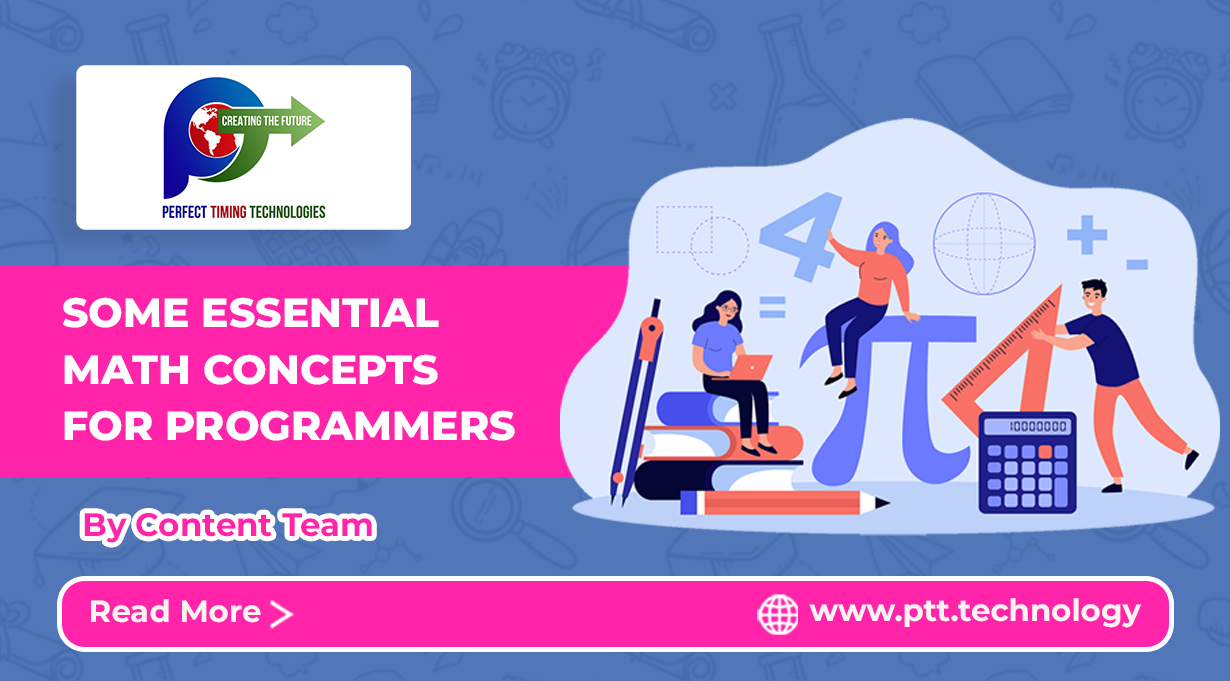
Many people believe that programming is a field that only requires a little mathematical understanding. Although you don’t have to be an experienced mathematician to become a programmer, understanding some mathematical principles can considerably improve your ability to code and solve problems. Therefore, the following mathematical concepts that every programmer should be familiar with:
Systematised Numbers
In programming, numerical systems are techniques to represent numbers using various symbols and bases. Decimal (base 10) is the most widely used system, followed by binary (base 2), hexadecimal (base 16), and octal (base 8). Each system uses a unique collection of symbols and symbolic guidelines for numbers. They serve a variety of functions in programming, including byte values, memory locations, and data representation. There are countless alternatives, and you, as a programmer, have the power to decide which system to use based on the requirements of your project. Will you continue using the decimal system as is, or will you look into novel and imaginative ways to represent numbers? You have a choice!
Algebraic Equations
Programmers employ the potent mathematical tool of linear algebra to manipulate massive data sets effectively. By utilising methods like matrix operations, vector addition, discovering eigenvalues and eigenvectors, machine learning, computer graphics, and cryptography, it aids programmers in creating sophisticated algorithms. The building blocks of linear algebra are similar to those that programmers might use to design complex systems that can handle and analyse large amounts of data.
Statistics
Applications for statistics in programming range from fraud detection to medical research. Programmers can make better decisions and design more effective systems by utilising statistics to analyse and understand data. It’s like having a detective on your team who can assist you in delving deeper into issues to find solutions.
Algebraic Booleans
Mathematical operations on binary variables are the subject of the discipline known as boolean algebra. A mathematical framework enables us to work with true and false values represented by 1 and 0. The three primary operations of Boolean algebra are AND, OR, and NOT.
- A dot (.) denotes the AND operator with two inputs. It only produces a one if both of the inputs are 1; else, it has a 0.
- The plus sign (+) designates the OR operation with two inputs. If either one or both of the inputs are 1, it outputs 1; otherwise, it outputs 0.
- The only input required by the NOT operation is represented by a bar across a variable (or ). It produces the opposite of the value supplied, so if the input was 1, it had 0; if the information was 0, it made 1.
We can construct logical formulations that represent intricate circumstances using these techniques. For instance, the formula (A AND B) OR (NOT A AND C) indicates that we want to output one if both A and B are one or if A is 0 and C is 1.
Points That Float
In programming, floating points resemble scientific notation for computers. They enable a wide variety of real numbers to be represented by a base and an exponent. The exponent is an integer that denotes the power of 2, and a base is a binary number that indicates the significant digits of the number. Together, they represent the number in the floating-point form. Unfortunately, due to the representation’s lack of precision, it is only sometimes accurate. Therefore, although frequently used for computations in science, engineering, and graphics, they must be carefully evaluated for any coding errors.
Logarithms
For situations requiring exponential growth or decay, logarithms act as specialised instruments. They aid in the reduction of enormous numbers to more manageable units, improving the efficiency of calculations. For instance, a computer programme can be required to determine the answer to a complex mathematical equation with many significant figures. The programme can reduce those numbers to smaller, more manageable values by taking their logarithm. This can minimise the processing time and memory needed to finish the calculation.
The Set Theory
Sets are collections of unique things and are the subject of set theory. Set theory is a tool used in programming to deal with data grouping and organisation issues. A group of distinctive elements might be referred to as a set. These components could be anything, including strings, numbers, or even other sets. Set theory is used in programming to address issues like looking for elements in a collection, contrasting sets, and merging or separating groups. In addition, it is frequently employed in machine learning, data analysis, and database management.
Combinatorics
Counting and organising items is made simple with combinatorics. In addition, programmers can handle various applications’ probability, statistics, and optimisation issues by employing combinatorial techniques. Combinatorics can be used, for instance, to create random numbers or to look for patterns in massive datasets.
Theory of Graphs
Graph theory is used in programming to address issues, including determining the shortest route between any two nodes in a network, spotting cycles or loops in a graph, and grouping nodes into communities. Graph theory is also employed in artificial intelligence and machine learning to model neural networks and decision trees. The capacity of graph theory to express complicated systems and interactions clearly and understandably is one of the significant advantages of graph theory in programming. Programmers may analyse and optimise complex systems more effectively by utilising graphs to model problems, making graph theory a crucial tool for many programming applications.







